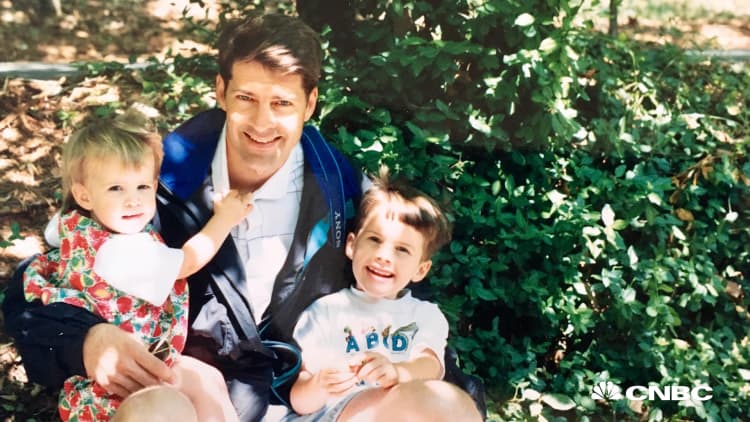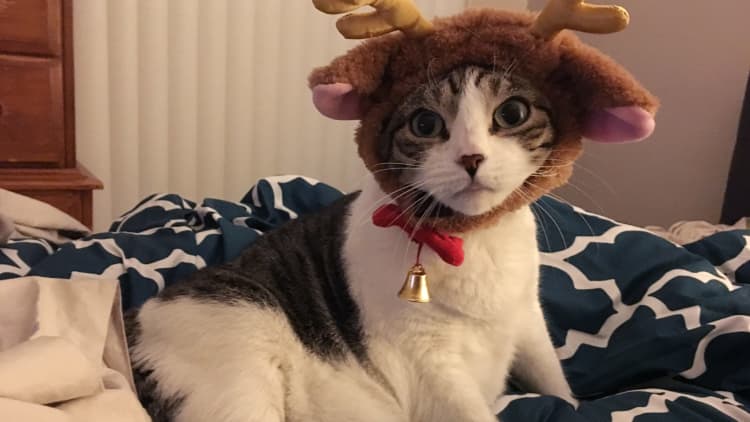In 2009, my husband and I adopted an eight-week-old rescue kitten and named her Bubbles.
Bubbles became a fat, joyful companion who followed us, dog-like, around our New York apartment. She ate dinner when we ate dinner and ripped through three couches, which remained hopelessly resistant to every scratch-repelling product we could find.
But by 2016, Bubbles had developed a severe colon disease and was about to die.
In the previous year, we'd spent almost $3,000 on medicine, vet visits and painful temporary interventions.
The only options left were either a $4,000 surgery and vet stay that might give her a shot at a normal life, or to put her out of her misery.
My husband and I earned a good living and were disciplined savers, but even for us, a tab of $7,000 was shocking. Was the life of a house cat worth that much money?
My mother — a single, working mom for most of my childhood who understood the value of a dollar — thought the idea of paying that much was ridiculous.
But when I questioned the choice, my husband looked at me like a murderer. "You're going to kill my cat?" he said.
How much to spend when our pets get sick is a dilemma that many of us face. Some 68 percent of American households have pets, which equals about 85 million homes, according to the American Pet Products Association. That's up from 56 percent 30 years ago, when the group first started doing its annual survey.
Increasingly, pets are becoming members of the family, and costs are rising. Last year, total pet spending, including food, supplies and services, ballooned to nearly $67 billion from $60 billion the year before, the APPA reports. A whopping $16 billion of that spending was on vet care.
That means these lovable creatures create their fair share of moral, and financial, conundrums. According to a 2011 Kroger Co. survey, a majority of Americans (61 percent) would spend up to $1,000 to save their pet, while 15 percent would spend up to $3,000, and ten percent would spend even more.
Where do you draw the line? How much is too much? Should you go into debt or dip into hard-earned savings to save a life? It can be a difficult choice.
I used to say that we didn't choose Bubbles. She chose us.
The kitten I had seen online and called about was a snow-white beauty that was snapped up immediately by someone else. "I have others at my house," the woman at the rescue foundation said. "Do you want to come see them?"
So we took the train deep into Queens and arrived at a barnyard disguised as a home. Chickens squawked on the porch, dogs ran through the living room and cats lounged in every corner.
"She just loves them so much," the woman's husband said with an apologetic grin as she went to fetch the kittens.
And then she was back with a box of abandoned American tabby cats. While the others slept, one with big ears and a tiny face bounded out and proudly puffed her chest.
Pick me, she seemed to say. So we did.
We had accepted the joy, the frustration and, ultimately, the responsibility of being her caretakers.
Would we choose her this time, when she didn't have a choice?
We did.
While it was a hit to our savings, we were able to pay the bills without taking on debt, which is something financial experts generally advise against.
Looking back, I wish only that we'd had the foresight to purchase pet insurance when she was young and healthy. With typical premiums of about $25 a month and payouts of around 80 percent of medical expenses, we would have contributed about $1,600 by the time she started having issues and might have saved as much as $4,000.
But I've never regretted spending the money.
The surgery, which removed 90 percent of Bubbles' colon, worked. After a few weeks of recovery, she was back to greeting us when we got home, rolling on her back to elicit belly rubs and climbing on top of us at every opportunity.
In fact, for much of the time I was writing this article, she was perched on my chest, purring in quiet contentment.
Was she worth it? She was to me.




